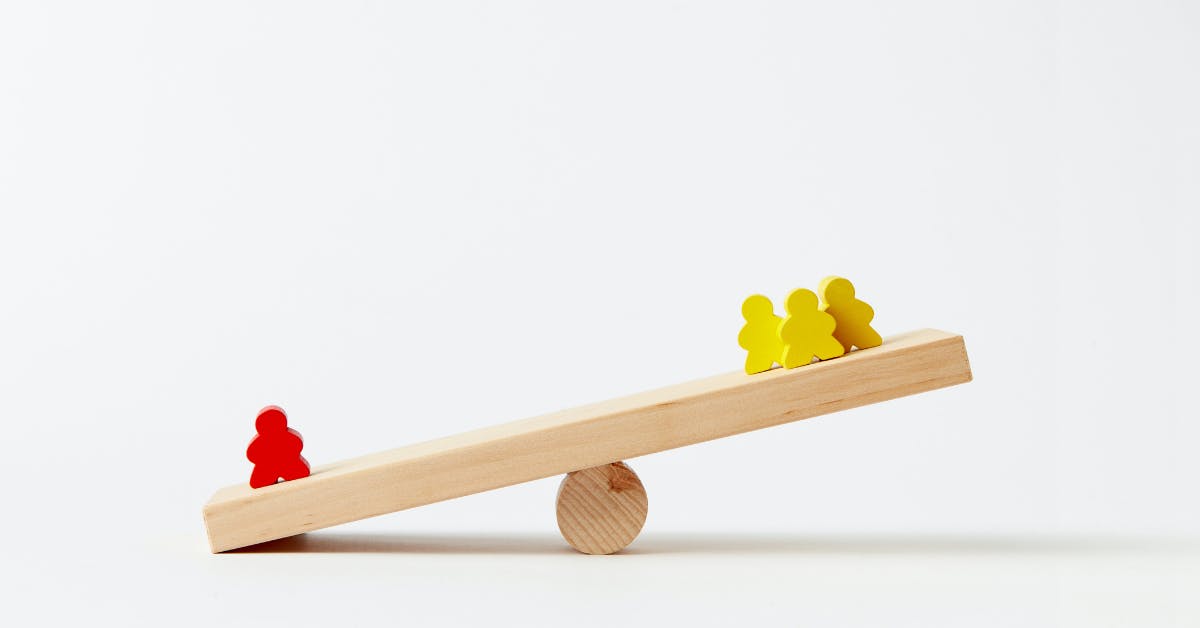✨ Health insurance, now in PayFit - learn more
💷 All the rates & thresholds you need to know for 25/26...right here
✨ The Payroll Journey: Start, Scale & Succeed Globally - learn more
✨ Health insurance, now in PayFit - learn more
💷 All the rates & thresholds you need to know for 25/26...right here
✨ The Payroll Journey: Start, Scale & Succeed Globally - learn more

The results are in.
With the final reporting deadline already passed, it’s time to look at what we’ve learned from the government's Gender Pay Gap (GPG) report in 2022.
If you’re a company with a headcount over 250, you were required to submit payroll figures to the government earlier this month.
Unfortunately, the data tallied so far doesn’t paint a promising picture: it looks like the median pay gap has widened for many industries; finance, construction and communication, in particular.
On average, women make 90p for every pound earned by a man in the UK.
We break down some of the results published by the government and explore what this means for gender pay equality in the UK workplace.
When it comes to combatting gender inequality in the workplace, there’s more work to do.
As mentioned in the introduction, this year’s report revealed that for roughly every pound their male counterparts made this year, women only received 90p.
The gap is even wider for industries like finance - where women received 88p - and construction - where women made 76p to the pound.
Social work, human health, entertainment, transport and storage were among the sectors with the smallest gaps; women received between 95p and 98p on average for every male pound earned here. Despite this, women are still likely to earn low wages in these sectors.
Unfortunately, this means the pay differential hasn’t improved much over the past five years.
Yes, the difference was slightly higher in 2020. But given the median gap was 9.2% in 2017 (when reporting became a requirement), it’s clear there’s been little improvement since.
The CIPD commented on the latest figures sharing that ‘very little has changed’ despite the government’s efforts to bring more transparency to this subject.
From small retailers to major banks, airlines and even academy trusts, thousands of companies submitted reports this year (though this was less than last year).
Among some of the higher-profile companies reporting were easyJet and HSBC.
Figures for EasyJet’s largest division EasyJet Airline Company revealed that women’s median wages amounted to just 36p for every £1 men earned. A spokesperson for the company was quick to qualify this, claiming data from April 2021 skewed their submission; during this time, most of their female cabin crew were still furloughed.
Things aren’t necessarily better at large corporations such as HSBC bank - their figures showed that men earn at least double the wage of female coworkers.
Of course, we’d be remiss not to discuss gender pay inequality without exploring the impact the recent pandemic might have had.
While the GPG improved slightly over previous years, the reverse happened during the 2nd year of the Coronavirus.
While fewer workers were furloughed, more of them were women, many of whom stepped away from the workplace altogether at the height of the pandemic.
It’s clear that the increased social pressure of family caretaking and looking after children learning from home was the driver behind this and that workplaces had trouble flexing to accommodate these familial duties.
Add rising inflation into the mix, and things get more complex.
According to the Living Wage Foundation, 20% of all women in work earn less than the real Living Wage.
That means jobs held by women account for roughly 60% of all contracts under £9.90/hour.
In other words, women are more likely to be hit harder by the cost of living crisis than male workers, leading to a phenomenon coined as ‘she-inflation’.
The Gender Pay Gap report started as an effort to bring more transparency to an issue that also requires considerable action.
However, for some companies, reporting has become an exercise in 'ticking boxes’.
Charles Cotton, a senior policy advisor for CIPD, had this to say:
“Employers shouldn’t just report the numbers; instead, they need to understand the reason for any gap and be transparent about how they plan to tackle it.” - the Guardian UK
Indeed, understanding why there is a gender pay gap in the first place and then figuring out what kind of transformation needs to take place to reduce it, should happen alongside meeting yearly reporting requirements.
It’s also important to factor in how recent events such as the pandemic and concerning trends like inflation may be affecting men and women differently and what companies can do to address this.


One of the most powerful and often underutilised staffing strategies is looking within. Here, we break down internal recruitment for UK businesses.

Draft ‘Equality (Race and Disability) Bill’ 2024: new measures, what it includes, how businesses can prepare

In light of the International Transgender Day of Visibility 2024, let's explore how HR teams can effectively support transgender employees and create a more inclusive environment.

Our guide to Ramadan advice for employers details exactly how HR teams can support and make accommodations for Muslim employees.

International Women's Day is marked annually on 8 March. It's an opportunity to celebrate the achievements of women all across the globe.

If your organisation has 250+ employees, chances are you'll need to submit a Gender Pay Gap report. We offer a quick summary of all you need to know.